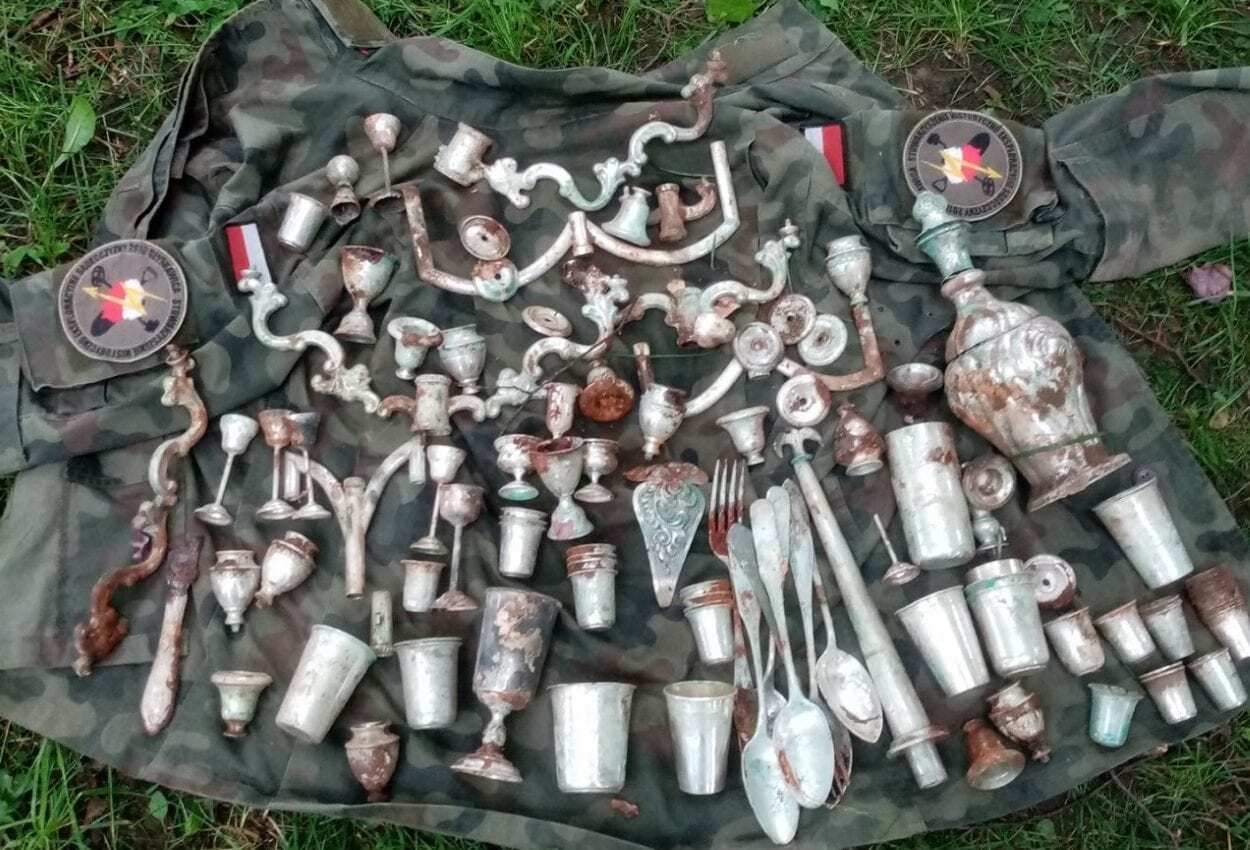The Nowy Sącz Historical and Exploratory Association has discovered a cache of 103 silver objects buried in a chest at Nowy Sącz Royal Castle in Poland.
The castle dates to the 14th century during the reign of Casimir III the Great and has hosted notable figures from history such as king Louis I of Hungary, Saint Queen Jadwiga of Anjou and Władysław II Jagiełło King of Poland. During the deluge (a series of campaigns in the Polish–Lithuanian Commonwealth) in 1655 the castle was partly destroyed by Swedish-Brandenburgian troops and remained a ruin.
The German army used the remaining fortifications during WW2 as an ammunition store and to carry out executions. Adjacent to the castle was the Nowy Sącz Ghetto, established to persecute and exploit Polish Jews living in the city during the German occupation.
The dispossessed Jews were forced by the SS to subsist on little to nothing in extremely overcrowded conditions and to work in several forced labour camps established in the vicinity of Nowy Sącz.

The discovery was made by a team of detectorists in the castle grounds, who were carrying out exploratory works when they discovered fragments of paper. Underneath was a rusted chest that held numerous silver objects such as goblets, vases, tableware, and cutlery that originate from Poland and Austria.
Local archaeologist Bartłomiej Urbański told TheFirstNews: “It is Judaica, probably from the turn of the 19th and 20th century, connected to Jewish ritual and was probably buried during World War Two.”
It is believed that the items were stolen by German soldiers from the homes of the Jewish population, and buried them in a cache with the hope to retrieve later.
The treasure is being handed over to archaeologists to carry out further studies with the intention for them to be placed on display in the local museum.
Header Image Credit : Historical and Exploratory Association Sądecczyzna





